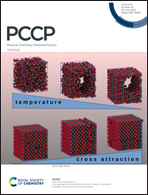A theoretical study on the effect of C60 particles on the growth of coronene radical based on HACA pathway†
Abstract
Soot is a pollutant caused by combustion and is harmful to the environment and human health. Polycyclic aromatic hydrocarbons (PAHs) are considered the precursors of soot, thus exploring the growth mechanism of PAHs is conducive to reducing soot release. The mechanism by which a pentagonal carbon ring triggers the formation of curved PAHs has been demonstrated but studies on subsequent growth of soot are rare due to the lack of a suitable model. Buckminsterfullerene (C60), as one of the products from incomplete combustion under specific conditions, is similar in structure to soot particles with a surface that can be treated as curved PAH. Coronene (C24H12) is a typical seven-membered fused-ring PAH. In this study, C60 was employed as a substitute for soot particles to investigate its effect on coronene growth reaction based on the hydrogen-abstraction/acetylene-addition (HACA) mechanism. Density functional theory (DFT) at the M062X/6-31G(d,p) level was adopted to investigate the potential energy surfaces (PESs) for these reactions. The high-pressure limiting rate constants for the relevant reactions were obtained based on transition state theory. The calculated results indicate that C60 is easily hydrogenated, providing new pathways for coronene growth. Soot particles have a certain effect on the growth of PAHs. This study provides favorable support for further understanding the effect of soot on the growth pathway of PAHs.



 Please wait while we load your content...
Please wait while we load your content...